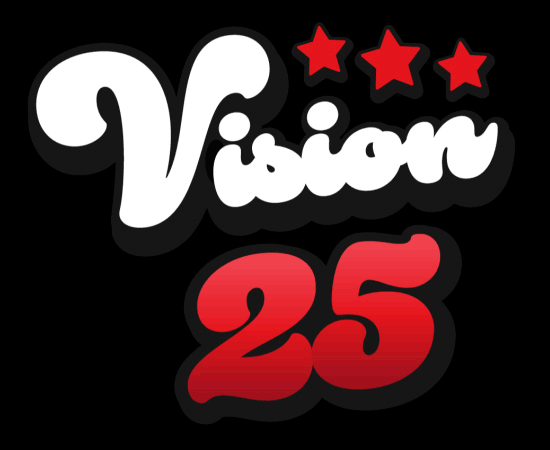IT Documentation: Do it for Your Process!
Robust Documentation Practices Feed a Process-Focused Approach to MSP Growth
We’ve talked about how documentation — good documentation — can help your techs do their jobs more efficiently and with less stress. We’ve talked about the power of documentation to eliminate those small inefficiencies which, over time, can erode your business’s bottom line. Now it’s time to cut down to the very core of the matter.
In this blog post, we’re going to look at the relationship between IT documentation and process. As the following should make clear, robust documentation practices help businesses run more efficiently and profitably by improving process.
What is Process?
In business, your process is … everything. OK, that might be overstating things just a little, but if we define a “process” as “the way something gets done,” then it’s not a stretch to say that businesses — when you strip away all of the superficial elements — are just people engaged in various processes.
Now, depending on how organized and efficient your business is, these processes can range from largely improvisational to highly systematic, and from vague to crystal clear. But whatever the case, your IT company’s “process” is the totality of all the individual processes by which you and your employees carry out your duties. Simply put, your process is how your business gets things done.
So, let’s take an in-depth look at the relationship between IT documentation and process. The more you know about this topic, the more effectively you can harness documentation to help you achieve YOUR business goals.
Process Makes Perfect
Deciding to get serious about documentation is one of the single most powerful business decisions you can make. This is because a commitment to documentation is a commitment to process, and a commitment to process is, perhaps more than anything else, what distinguishes successful and profitable IT businesses from the plethora of companies fighting for survival.
Being committed to your process isn’t the same thing as being committed to your business. This is important to keep in mind. Being committed to your business means that you really want to see it succeed, and work hard — really hard — to bring about that success. Most business owners are committed to their respective businesses. Being committed to your process means that you want to see your business succeed, but also, that you’re willing to spend time and energy on figuring out HOW BEST TO DO THAT. A true commitment to process is relatively rare in the business world.
Here’s an analogy. If you want to make the NBA, it’s a good idea to practice basketball — and practice A LOT. But an even better idea is practicing a lot AND taking time to step back, identify weak points in your game, and tailor a training program to bring your weak points up to speed.
Documentation forces you to step back in this manner and think about how your business ‘practices’ — i.e., how it gets things done. When you write down the processes by which your business runs, you’re FAR more likely to apply critical thinking to make these processes better, more efficient, etc. In short, documentation provides a direct impetus for working on how you work.
Practice may make perfect, but only when it’s bolstered by an awareness of process. Are you using documentation not only as a way of recording core business processes, but as a tool for refining these processes for maximal productivity and efficiency?
Go with the Flow
We just discussed how documentation facilitates process refinement and optimization — by writing down your IT company’s core business processes, you’re forced to take a good, hard look at those processes, and consider whether and in what ways they could be improved.
When it comes to process refinement, one thing you should be looking to do is maximize flow. A process that flows is one that unfolds smoothly and efficiently. And when your processes flow, so too do your workers.
“Flow state” (so dubbed by the psychologist Mihaly Csikszentmihalyi) is a recognized and widely studied psychological phenomenon. It refers to a mental state people sometimes enter when they’re doing something they enjoy, are good at, and find challenging but not too challenging (i.e., not overwhelming). You can think of being in the flow state as being “in the zone” — you’re immersed in a goal-directed activity, everything’s clicking, and you experience a pleasurable feeling of total focus and clarity.
Documenting your core business processes breaks tasks down into a series of discrete steps. The benefit of generating a specific sequence of steps cannot be overstated vis-à-vis the pursuit of flow. This is because a key feature of the flow state is, as Csikszentmihalyi remarked in a 2004 TED Talk, knowing “exactly what you want to do from one moment to the other.” When you’re in the flow state, “every action, movement, and thought follows inevitably from the previous one.”
If your business has clear, stepwise processes for your techs to follow — which it will, if your documentation is up to snuff — your techs will be able to enter the flow state more easily and more often; under most circumstances, they’ll know what to do and when to do it. This is good for business; studies have linked the flow state to productivity, motivation, and company loyalty.
Step it Up
We just talked about how documentation creates clear-cut, stepwise processes that make it easier for your technicians to get in the zone. Let’s discuss the importance of steps some more.
Breaking down a task into a series of discrete steps is a powerful tool for augmenting productivity. In our previous blog post on documentation, we saw how the accumulation of small inefficiencies at your business can really hurt your bottom line. One such ‘small inefficiency’ is the simple act of pausing and asking yourself, ‘OK, what am I supposed to do next?’ People without morning routines know how much time this single thought can gobble up. And people with morning routines know the pleasure of being able to move seamlessly from one thing to the next.
But you want your techs engaged. You don’t want them to go through the motions, mindlessly following steps that have been laid out for them. You want them thinking for themselves … right?
First, if your documentation gets so good that your techs are having too easy a time, barely needing to think, feel free to send us a detailed description of your documentation protocols — because that sounds like a good problem to have!
Second, that’s not going to happen. Providing IT support is always going to be unpredictable, challenging, and at times, stressful.
Your techs are like chefs, in that they receive tickets (orders) from paying customers who expect swift and competent service (a good meal). Without ‘recipes’ (clear-cut, written-down processes to follow), your techs have to spend time and cognitive resources figuring out what to do and when to do it. But when your techs have ‘recipes,’ they don’t have to think about what to do when, and thus, can focus entirely on performing their jobs well. When you know what you’re supposed to do at each stage in a process, you can devote your attention to quality — to carrying out each sub-task to the best of your abilities.
What does this mean for your IT business? Three words: better service delivery.
Work on Your Masterpiece
Your business is your baby. Your masterpiece. Your pride and joy. You built it from the ground up, and every aspect — from your company name to your office décor — should bear the mark of your personality.
If this doesn’t resonate, you might want to start thinking of your business in the above terms — as something you appreciate for its own sake, and not merely as a means to an end. If your business is nothing more than a steppingstone to retirement, to wealth … to whatever, you’re in trouble. Why?
Because growing a successful IT company from scratch takes genuine passion. If you don’t care about your business in the same obsessive, detail-oriented way that artists care about their art, you’re simply not going to put in the work required to succeed.
Working on process is boring and painful if you don’t really love what you do. But when you have genuine passion — when you have a true vision — working on process can be deeply gratifying. There’s a unique pleasure that comes from making small tweaks to something you’ve worked hard to bring into existence.
Picture the car enthusiast in his garage, tinkering away on his custom hot rod. Picture the writer, hunched over a draft of her novel, removing a comma … putting it back. That needs to be you.
Documentation is, at its core, all about details. Making sure your core business processes are streamlined at every step of the way. This isn’t something you do once, either. It’s continuous. Perfecting your IT business’s processes is itself a process — ongoing and ever-evolving. Documentation without a documentation management strategy — a systematic policy for reviewing and updating documents — is just dead weight. A waste of time.
Do you embrace documentation as a powerful tool for process improvement at your IT business? Remember, if you don’t, your employees won’t either.
Level Up Your Documentation with IT Glue
Documentation shouldn’t be something you do because you’re ‘supposed to.’ It should be something you do in order to help your business operate more efficiently and profitably. And, like any business investment, spending time and money on documentation will only yield a healthy ROI if you go about things carefully, intelligently, and systematically. Now, it’s possible to develop effective documentation protocols without the help of specialized software — but why makes things harder on yourself?
IT Glue is a best-in-class, SOC-2 compliant documentation software that helps MSPs of all sizes implement and maintain a cost-effective documentation strategy. If you own a growing IT business and want to take your documentation to the next level, nothing will get you there faster than IT Glue. There’s a reason over 200,000 people use IT Glue — it works!


